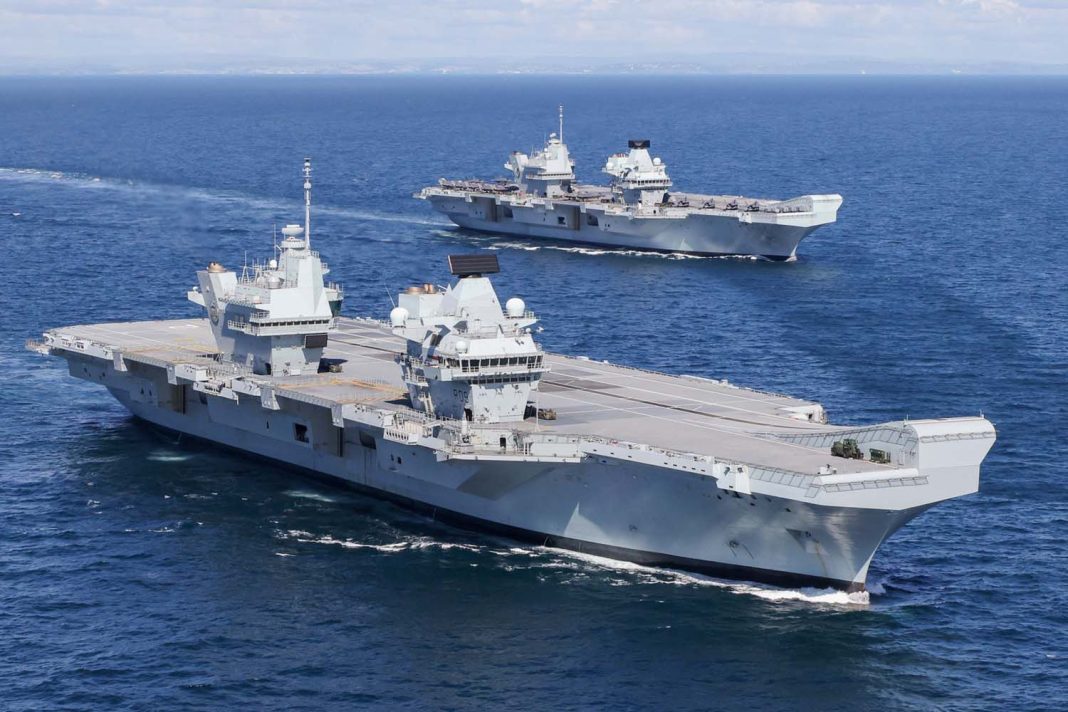Two British Queen Elizabeth-class aircraft carriers, despite their size, have limitations due to the lack of catapults. This affects the capabilities of the air group, which has been deprived of the support provided by onboard early warning aircraft.
Two British Queen Elizabeth-class aircraft carriers – HMS “Queen Elizabeth” and HMS “Prince of Wales” – are vessels with a displacement of approximately 72,800 metric tons, which entered service in 2017 and 2019. Although these are technically very modern ships, design assumptions limit the capabilities of the units built at a cost of nearly 8 billion dollars (11 billion Canadian dollars).
This is due, among other things, to the absence of catapults. Their absence forces the launch of onboard aircraft
using a bow “ski-jump”
– a ramp that propels the accelerated aircraft upward. This limits the weight, and thus the fuel and armament carried by the launching aircraft, and narrows the choice of potential onboard machines.
Read also:
Russia’s dwindling AWACS fleet puts pressure on aerial surveillance
As the backbone of the air group on both vessels, the UK chose American F-35Bs, capable of vertical and short take-off, but such capabilities are not present in maritime early warning aircraft (AWACS), such as the E-2D Advanced Hawkeye.
Merlin HM2 helicopters instead of AWACS
Their role was assigned to Merlin HM2 helicopters (the British version of the helicopters purchased by Poland, among others), which were equipped with the reconnaissance complex (Airborne Surveillance and Control – ASaC)
Crowsnest
. This includes a single, mechanically controlled head with a radar, lowered under the helicopter’s fuselage after takeoff.
Read also:
Helicopter flights around Pentagon halted amid safety concerns
The theory that these machines would effectively replace maritime AWACS has not been confirmed. The lack of reconnaissance machines resulted, among other things, in the failure of the British aircraft carrier – much newer and larger – in a simulated confrontation with the French aircraft carrier “Charles de Gaulle”. The French, with a smaller ship and 4th generation aircraft, managed to gain an advantage thanks to better reconnaissance.
Large drones as AWACS aircraft
Therefore – as reported by the UK Defence Journal – the UK is considering supplementing the air group of both aircraft carriers with AWACS. However, their role would be filled not by manned aircraft, but by large drones, such as the MQ-9B SkyGuardian, offering not only adequate payload but also a significantly longer flight time than helicopters.
Read also:
Ukrainian drone operators score points for combat victories
As reported by the UK Defence Journal, trials of this solution have already commenced, and
successful launches of MQ-9B
have been conducted from the deck of HMS “Prince of Wales”, being the largest drones ever launched from a Royal Navy ship.
Read also:
Collision in the Mediterranean: US Aircraft Carrier and Panamanian Vessel Suffer Damage
The U.S. Navy’s Constellation-class frigates are experiencing delays and cost overruns.
Atomic heritage: The concluding journey of USS Nimitz






